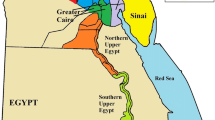Abstract
The presence of heterosis has been observed in many species at both phenotypic and gene levels. Strangely, the genetic basis of heterosis was and still is largely unknown. In this study, we extended and simplified some formulas that we reported previously. The foundation of our model was based on partitioning the F 1 phenotypic variance of the cross between two pure lines into additive, dominance and epistasis components, which lead to the estimation of effective factors, crossheritability in the broad and narrow sense and heterotic power. In the model, we assume that all polygenes controlling a quantitative trait have an equal genetic effect and are independent of each other. By extension of the heritability to a cross population, new features appear. The word ‘crossheritability’ acquires the status of a new genetic parameter that suffices to deal with the problem of crossbreeding and clarifies the picture of heterosis. Lastly, an example of employing the proposed method in analyzing the crossing data from Drosophila melanogaster is given to illustrate its application.
Similar content being viewed by others
References
Becker, W.A., 1984. Manual of Quantitative Genetics. Academic Enterprises, Pullman, 4th edn.
Bell, A.E., 1982. Selection for heterosis - results with laboratory and domestic animal. Proc. 2nd World Congr. Genet. Appl. Livest. Prod. 6: 206–227.
Chen, C., D.G. Rainnie, R.W. Greene & S. Tonegawa, 1994. Abnormal fear response and aggressive behavior in mutant mice deficient for alpha-calcium-calmodulin kinase II. Science 266: 291–294.
Cockerham, C.C., 1954. An extension of the concept of partitioning hereditary variance for analysis of covariances among relatives when epistasis is present. Genetics 39: 859–882.
Comings, D.E. & J.P. MacMurray, 2000. Molecular heterosis: a review. Mol. Genet. Metab. 71: 19–31.
Deng, H.W., 1998. Estimating within-locus nonadditive coefficient and discriminating dominance versus overdominance as the genetic cause of heterosis. Genetics 148: 2003–2014.
Deng, H.W., Y.X. Fu & M. Lynch, 1998. Inferring the major genomic mode of dominance and overdominance. Genetica 102– 103: 559–567.
Dickerson, G.E., 1973. Inbreeding and heterosis in animals, pp. 54–77 in Proc. Anim. Breed. Genet. Symp. In honor of J.L. Lush, Champaign, IL.
Dickerson, G.E., 1969. Experimental approaches in utilizing breed resources. Anim. Breed. Abstr. 37: 191–202.
Duvick, D.N., 2001. Biotechnology in the 1930s: the development of hybrid maize. Nat. Rev. Genet. 2: 69–74.
Falconer, D.S. & T.F.C. Mackay, 1996. Introduction to Quantitative Genetics. Longman, London, UK, 4th edn.
Gavora, J.S., R.W. Fairfull, B.F. Benkel, W.J. Cantwell & J.R. Chambers, 1996. Prediction of heterosis from DNA fingerprints in chickens. Genetics 144: 777–784.
Hill, W.G., 1982a. Dominance and epistasis as components of heterosis. Z. Tierzuchtg. Zuchtungsbiol. 99: 161–168.
Hill, W.G., 1982b. Predictions of response to artificial selection from new mutations. Genet. Res. 40: 255–278.
Jakubec, V., 1981. Components of heterosis, pp. 3.8–3.9 in 32nd Annual Meeting of the EAAP. Zegreb.
Li, M.D., 1988. Application of multivariate analysis to the prediction of animal heterosis. Acta Veterinaria et Zootechnica Sinica 19: 1–5.
Kempthorne, O., 1957. An Introduction to Genetical Statistics. Wiley, New York.
Mather, K. & J.L. Jinks, 1982. Biometrical Genetics. University Press, Cambridge, 3rd edn.
Sellier, P., 1982. Selection populations for use in crossbreeding. Proc. 2nd World Congr. Genet. Appl. Livest. Prod. 6: 15–49.
Shull, G.H., 1908. The composition of a field of maize. Am. Breed. Assoc. Rep. 4: 296.
Sprague, G.F. & L.A. Tatum, 1942. General versus special combining ability in single crosses of corn. J. Ame. Soc. Agron. 34: 923–932.
Visscher, P., R. Pong-Wong, C. Whittemore & C. Haley, 2000. Impact of biotechnology on (cross)breeding programmes in pigs. Livest. Prod. Sci. 65: 57–70.
Wei, M, H.A.M. Van der Steen, J.H.J. Van der Werf & W.E. Brescamp, 1991. Relationship between purebred and crossbred parameters I. Variances and covariances under the one-locus model. Z. Tierzuchtg. Zuchtungsbiol. 108: 253–261.
Wu, J.S. & M.D. Li, 1988. An operational genetic theory of heterosis with applications in animal and plant breeding pp. 416–422 in 2nd Int. Conf. Quant. Genet. edited by B.S. Weir, E.J. Eisen, M.M. Goodman & G. Namkoong. Sinauer Associates Inc., Sunderland, Massachusetts.
Xu, Z.C. & J. Zhu, 1999. An approach for predicting heterosis based on an additive, dominance and additive ×additive model with environment interaction. Heredity 82: 510–517.
Zhou, D.B., 1982. Approach to a mathematical model of heterosis of self-pollinated plants. Acta Genetica Sinica 9: 289–297.
Author information
Authors and Affiliations
Rights and permissions
About this article
Cite this article
Wu, Zx.(.J., Li, M.D. Analysis of Heterosis by a Direct Method Using the Concept of Heritability. Genetica 114, 163–170 (2002). https://doi.org/10.1023/A:1015106413832
Issue Date:
DOI: https://doi.org/10.1023/A:1015106413832




